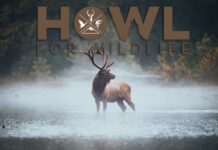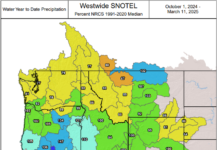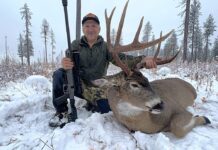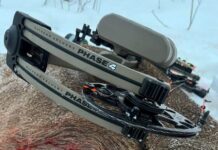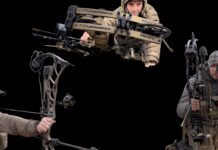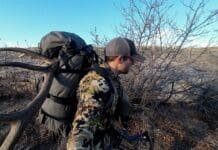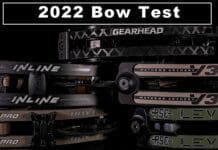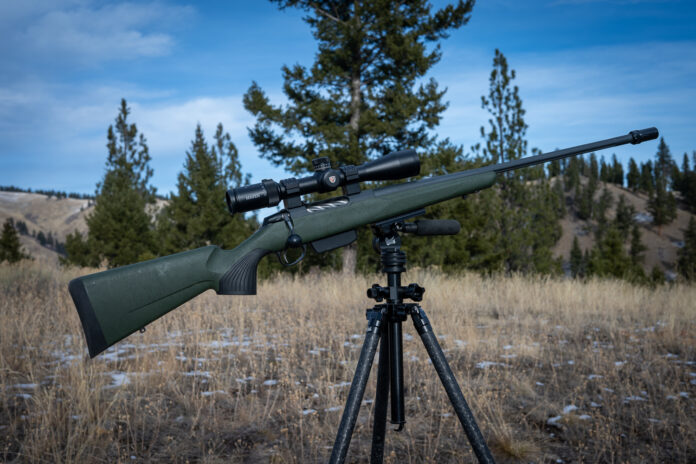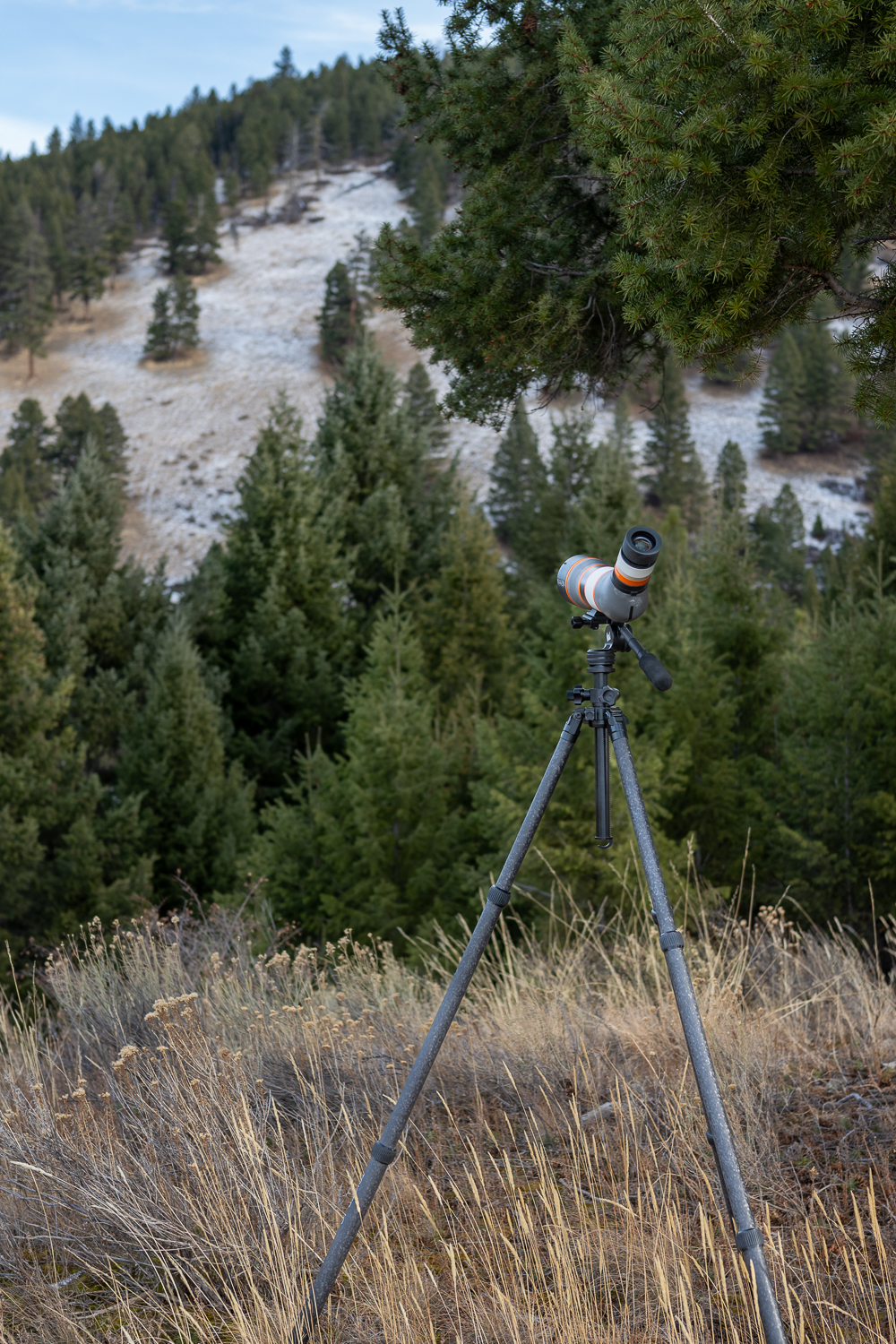
Western hunters have a lot of choices when it comes to stability equipment. From minimalist ultralights to big-glass heavyweights, the industry is saturated with stability options marketed to the hunter.
Tricer JC and Tricer BP
After spending a season with Tricer’s lightweight Tricer-AD tripod legs and Tricer-LP pan head, I was encouraged to try the heavy duty Tricer-JC tripod legs and Tricer-BP fluid pan head. After a full season, I discovered the JD and BP were more than a stability solution for heavy weights, but rather a versatile stability system with a new set of innovative features for the hunting market.
Tricer JC Tripod Leg Features
The Tricer JC retains the AD’s inverted twist-lock carbon fiber leg design, and like the AD, the JC’s twist-locks loosen and tighten in the opposite direction of other tripods. Some twist lock tripods have a diagram sticker indicating the lessening and tightening directions. That would be helpful on the JC. The aluminum center column has geared teeth that allow vertical adjustment with a dedicated knob. A separate knob controls the vertical adjustment tension and drag. There are still two knobs left on the center column. One locks down center column rotation while the other is an innovative knob that pans the column 5 degrees per full knob rotation.
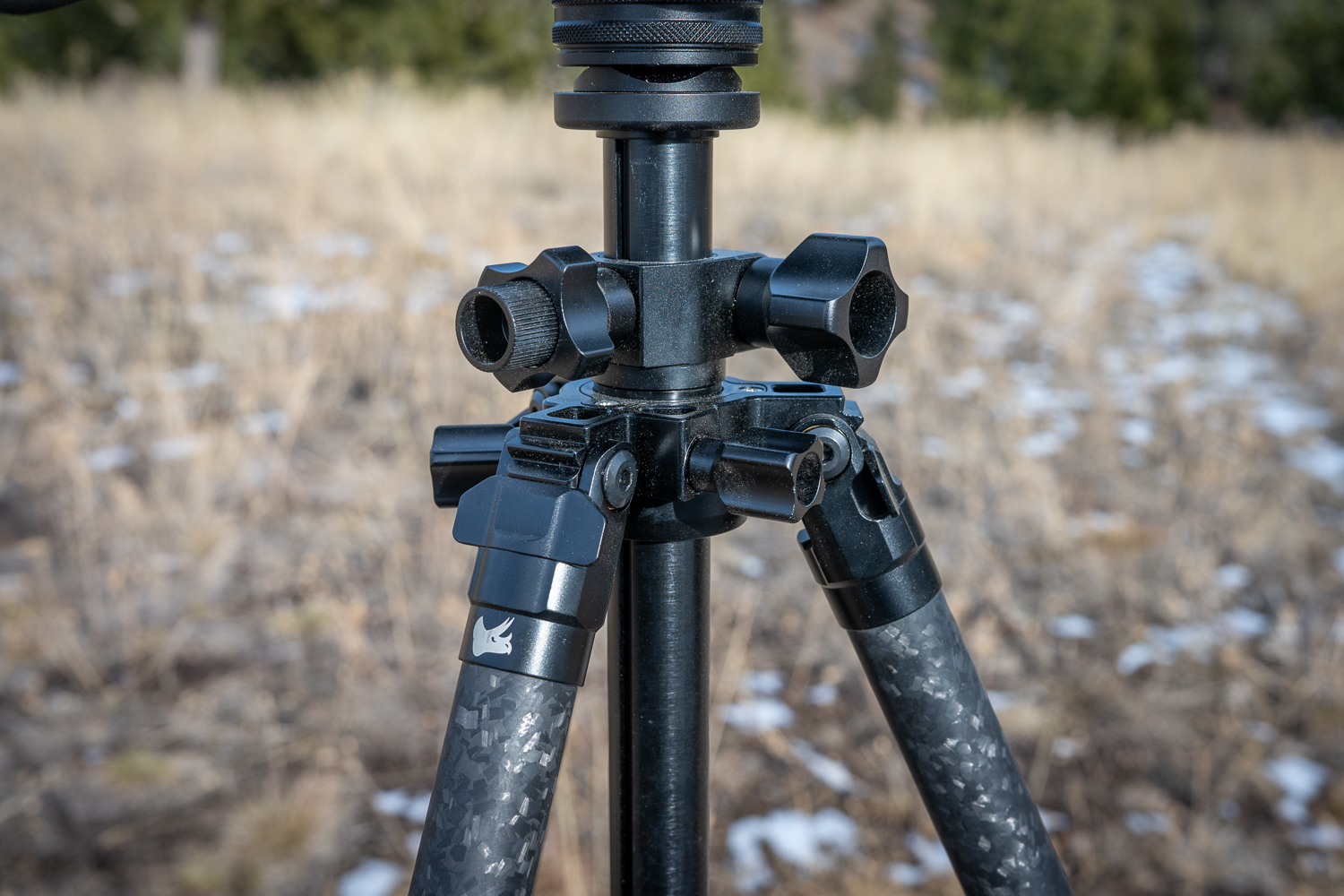
The practical field use of these two micro adjustment systems (vertical and horizontal) is that the hunter can make small, precise adjustments without using the tripod head itself. I found this useful for grid glassing. It provided a level of precise adjustment other tripod systems just don’t have. Furthermore, the utility goes well beyond hunting, particularly with panorama photography, as the photographer can be critically precise when taking a series of photos for stitching later. Still yet, it made for excellent precise adjustment for digiscoping, which can be a real exercise in frustration when trying to align your subject using the head.
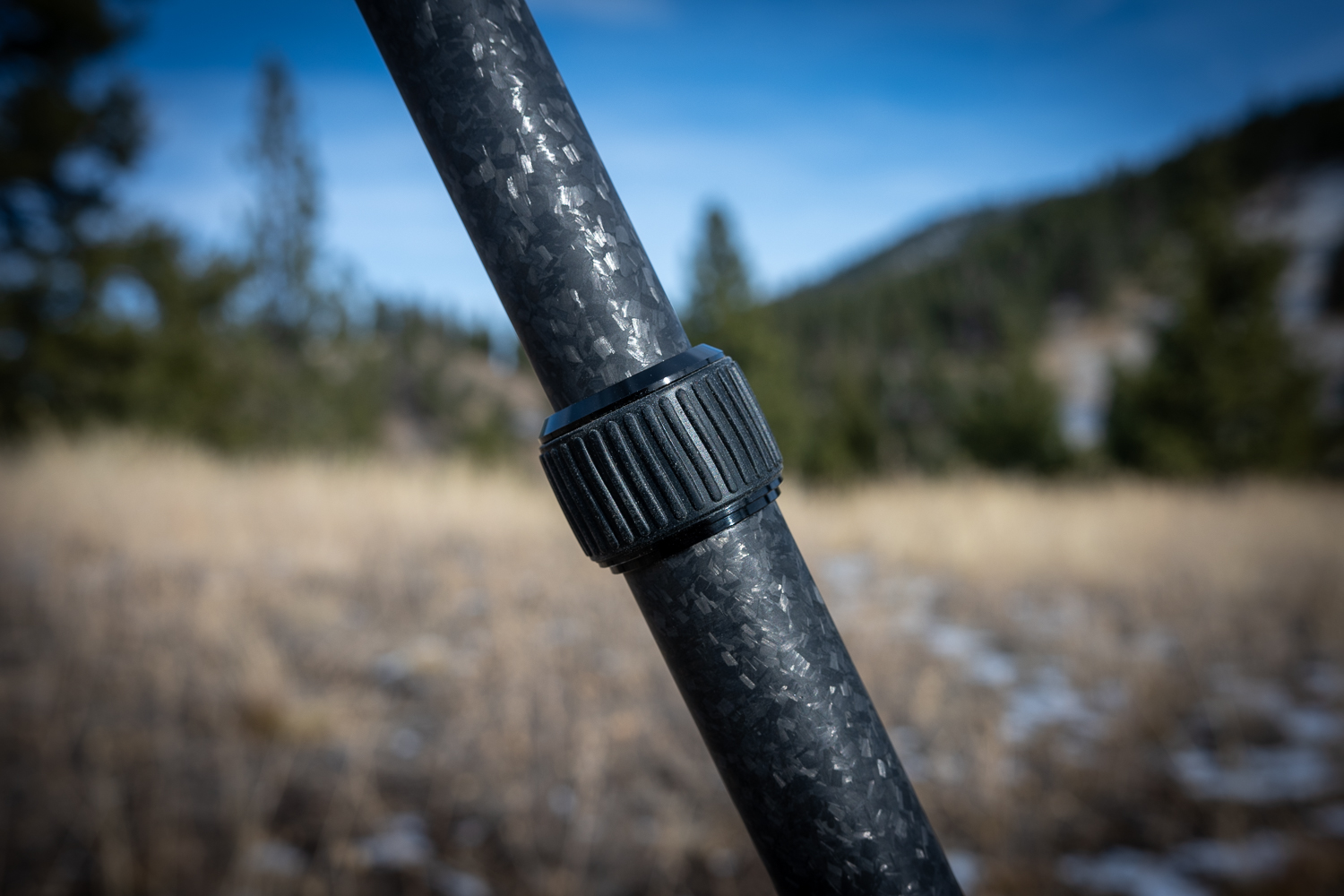
One Downside
The centermost adjustment system does limit the JC to a single length of center post, which limits how close to the ground the hunter can get the tripod head. The minimum distance from the ground to the head mounting plate is 11.25 inches. The legs have three angle positions, and the leg angle release tabs have wings that are easy to manipulate, even with gloves. The Tripod’s max height is a lofty 64 inches to the head mounting plate.
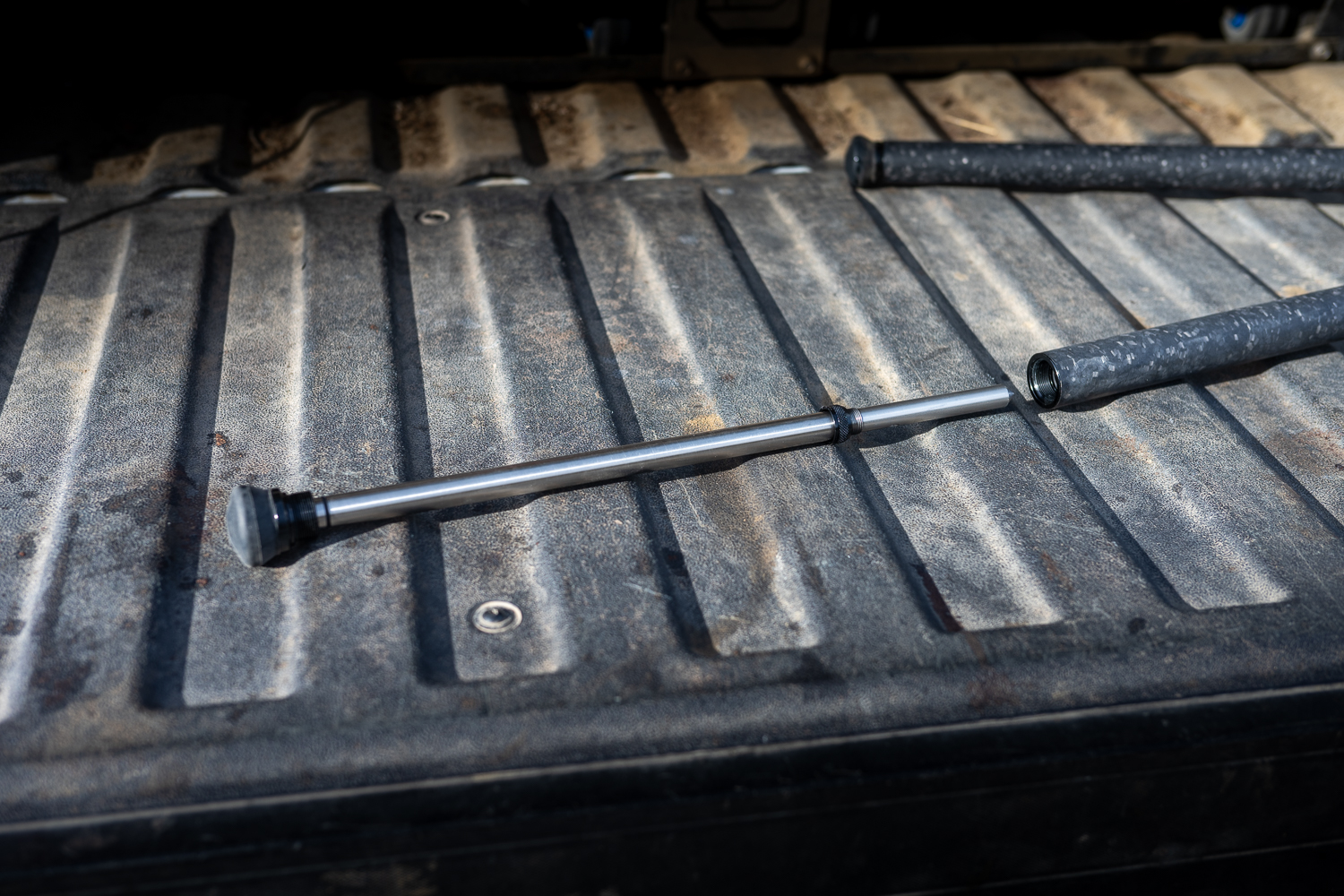
Adjustable Weight System
Innovation doesn’t end with the micro-adjusting center column. The Tricer JC gets really creative with adjustable tripod weight. Each leg will accommodate steel weights that are just over a pound each, while a separate weight is available to add 10 ounces to the center column. The leg weights can even be installed in such a way they double as spike feet.
With all of the weights installed, the JC weighs a measured 6 pounds 14 ounces. Remove all the weights and the JC slims down to just under 3 pounds! This level of versatility allows the JC to serve as both a backcountry hunting tripod and vehicle hunting tripod while not really compromising in either area. Very slick.
I noted in my review of the AD that the leg sections had such tight tolerances that they occasionally stuck together with frost and ice. I did not have this problem with the JC at all.
The Tricer JC has replaceable oversized rubber feet that can be removed to accommodate the leg weights as spikes.
Tricer BP Pan Head
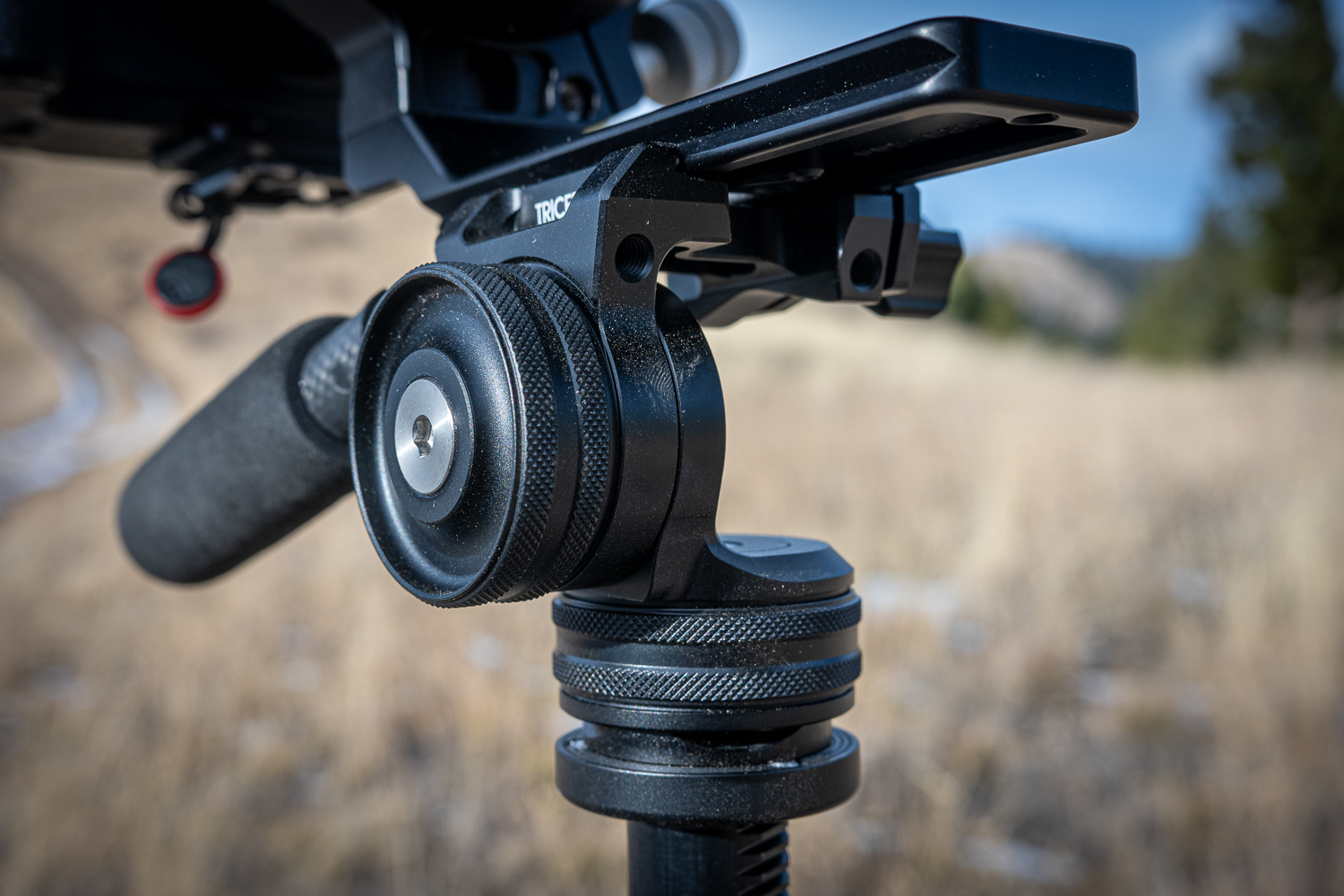
The Tricer BP is a fluid pan/tilt head with Arca-Swiss compatibility. Large wheel adjustments at the base and side control tension for panning and tilt, respectively. The removable foam and carbon fiber handle is clever in that it is collapsible, allowing for a short 5-inch handle or a fully extended 9 inches.
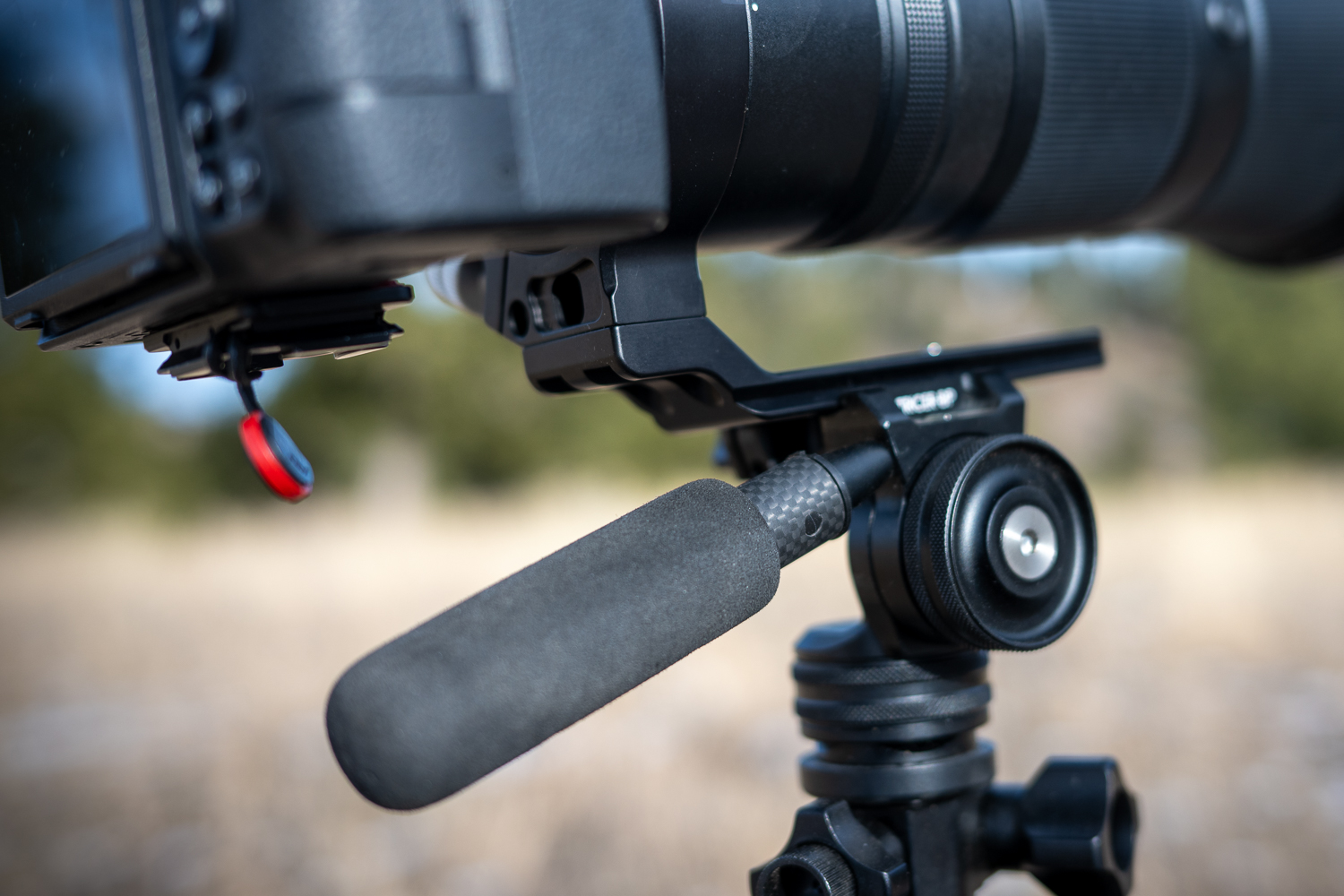
I found the collapsed length great for using with binoculars while the extended setting was great with large optics or a camera with telephoto lens.
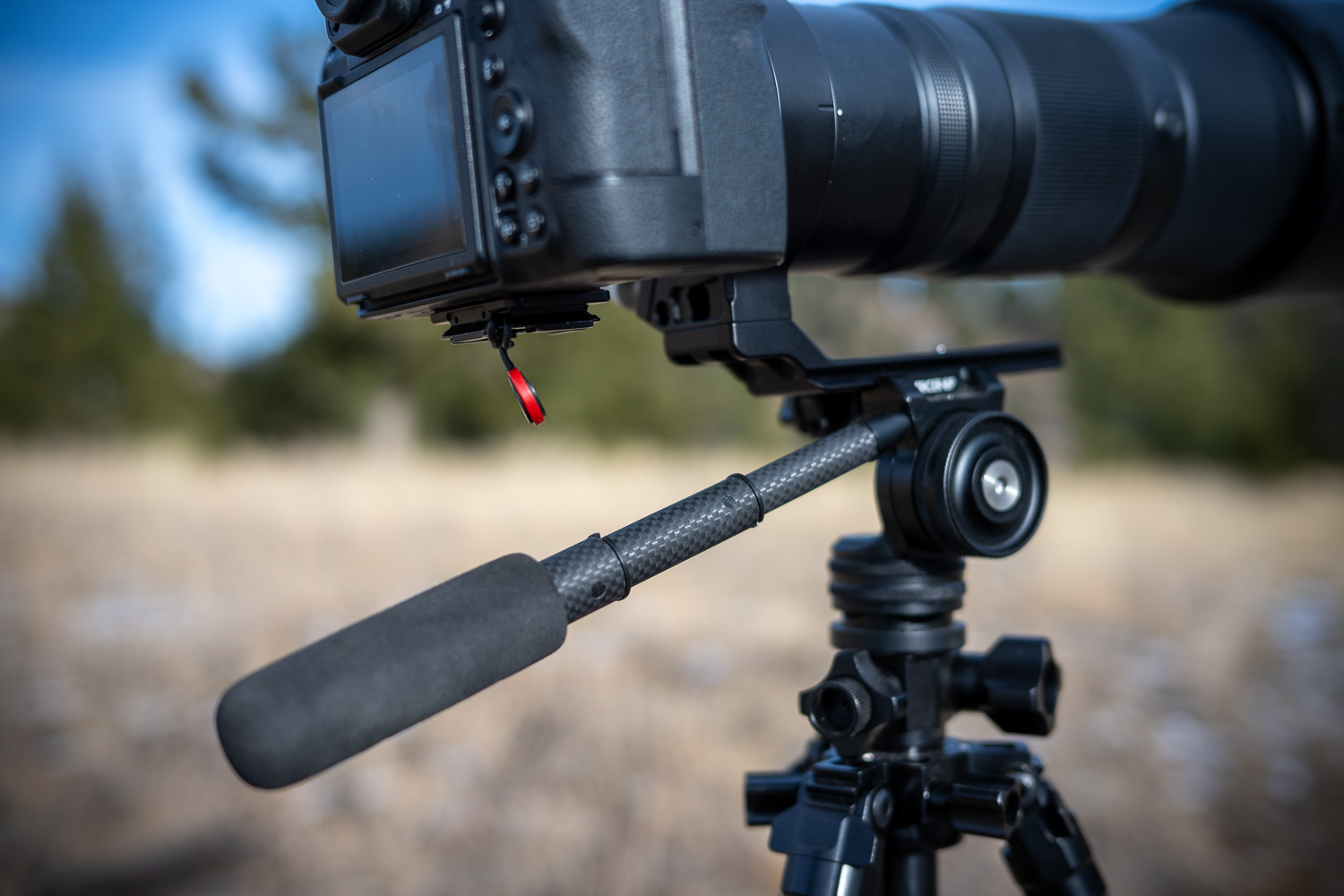
Light But Sturdy
The BP head is deceiving in appearance. Weighing in just over 12 ounces, the BP would be considered an ultralight head to most hunters. In fact, it is about the same weight as the Outdoorsman’s updated Gen 2 Pan Head, that many western hunters are familiar with. The thing is, the BP doesn’t really perform like a standard pan head. It pans with a fluid-damped smoothness of much larger dedicated video head like the Manfrotto MVH500AH. However, it does so without the Manfrotto’s nearly 2-pound weight.
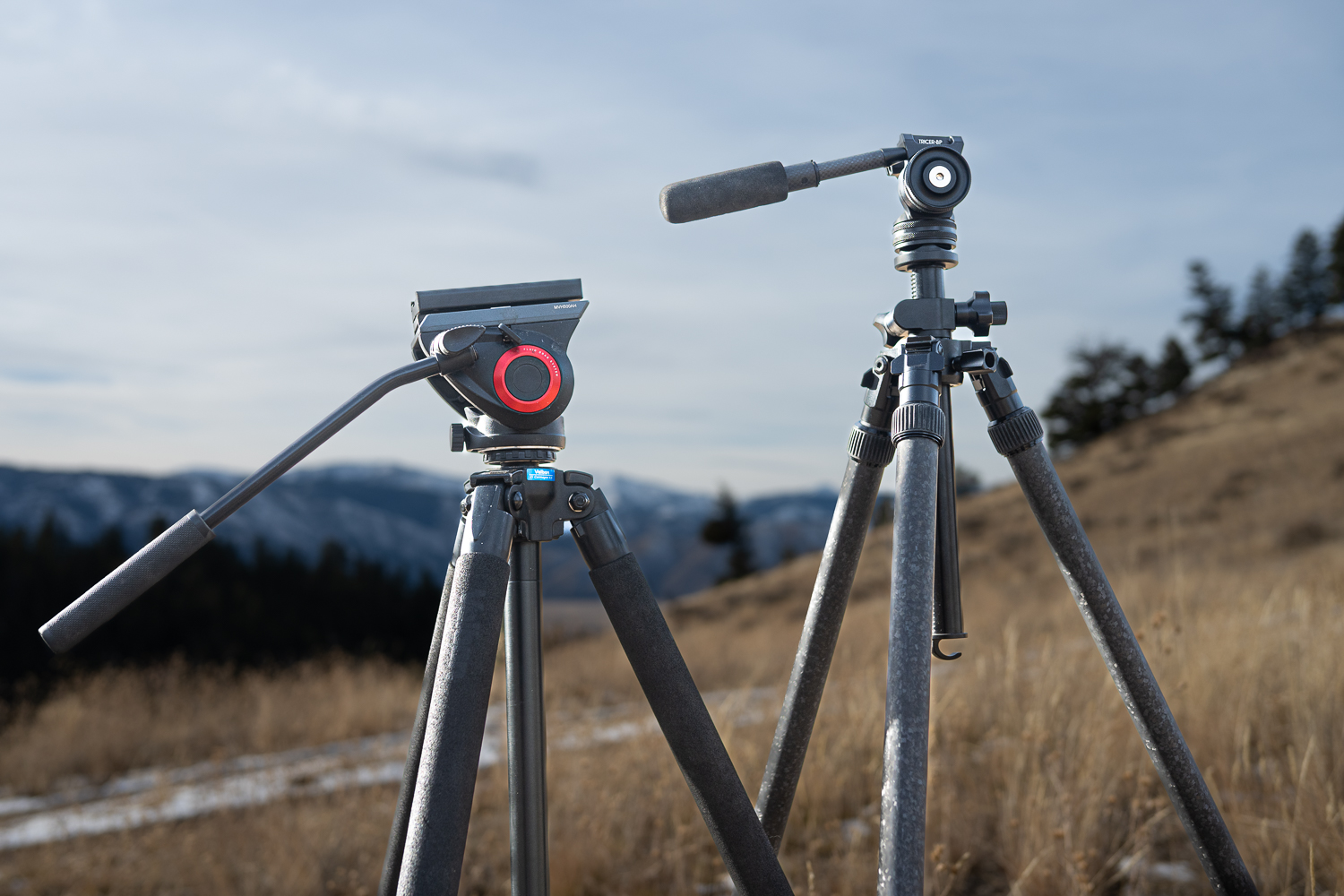
Panning performance is exceptional. With the adjustments set correctly, the head moves on either axis with confident smoothness, and stops firm on command. The BP is a very impressive head.
Field Performance
I used the Tricer JC and Tracer BP in a wide variety of hunting scenarios over the past few months. From horseback hunts for elk to vehicle based hunts for pronghorn, the JC/BP combo went all over Montana. This isn’t just an article about specs and features. I put these products through real, hard use literally daily for weeks at a time.
Tricer says the JC and BP are designed for big glass, and I think that is where they are at their best. Lots of tripods and heads can handle binoculars and compact spotters. The JC and BP do that as well but also handle the heavy stuff. I used them for digiscoping with a big Kowa 88 spotting scope as well as photography with a full frame mirrorless camera and 600mm telephoto lens. My Nikon Z8 camera and 180-600 lens has a combined weight of 7 pounds 6 ounces.
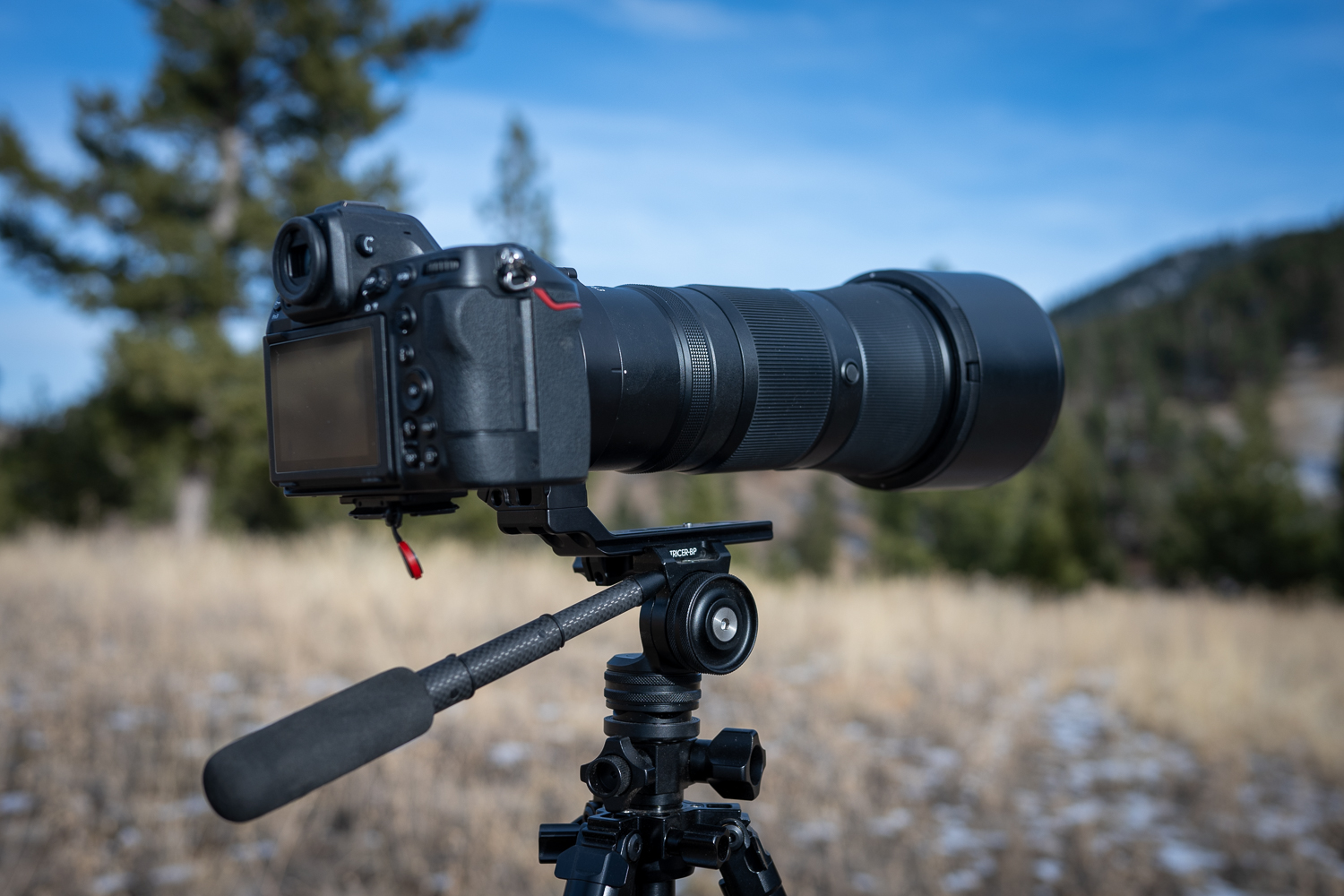
Compare that to a large hunting optic like the Swarovski BTX 95’s 6 pounds. These weights were child’s play for the Tricer JC/BP. The head adjustments were easy to set up, and I could forget about the support system and just get to the glassing or photography task at hand. I also shot off the system with a 10-pound rifle setup.

Shooting With The Tricer BP Head
While the BP head isn’t ideal for shooting, it certainly held the weight fine, and I was able to get some good shots on steel from sitting and standing positions. Tricer rates the JC for 33 pounds. Frankly, I would guess it could handle even more.
Very Versatile
I particularly enjoyed the versatility of having essentially a lightweight 3-pound tripod for backcountry and day hunting while also having an ultra-stable 7-plus-pound tripod for use by the truck. The extra weight was particularly useful on my Central Montana pronghorn hunt, where glassing in gusty conditions was the norm.
Additionally, I found the fit and finish of both the JC and the BP to be a step up over the already well made Tricer-AD and Tricer-LP.
Price, Value, and Warranty
The Tricer JC comes in at a retail price of $749. This is a substantial investment but has additional value in that the hunter is essentially getting two tripods in one.
The Tracer BP comes in at $349. This is a remarkable value given this head has the highest performance to weight ratio I have seen on the market to date.
Both products are listed as “Designed in the USA” and “Made in China.”
According to their website, Tricer has a limited three-year warranty for defects in material or workmanship under “normal use.”
Accessories and Other Products
I noted that shooting off the BP head wasn’t ideal. This is due to the limitations for shooting off pan heads generally. Recently Tricer addressed this with a fascinating alternate version of the BP, the DZ. The DZ uses the pan and tilt functionality of the BP but adds ball head utility for shooting from the system. Very clever indeed.
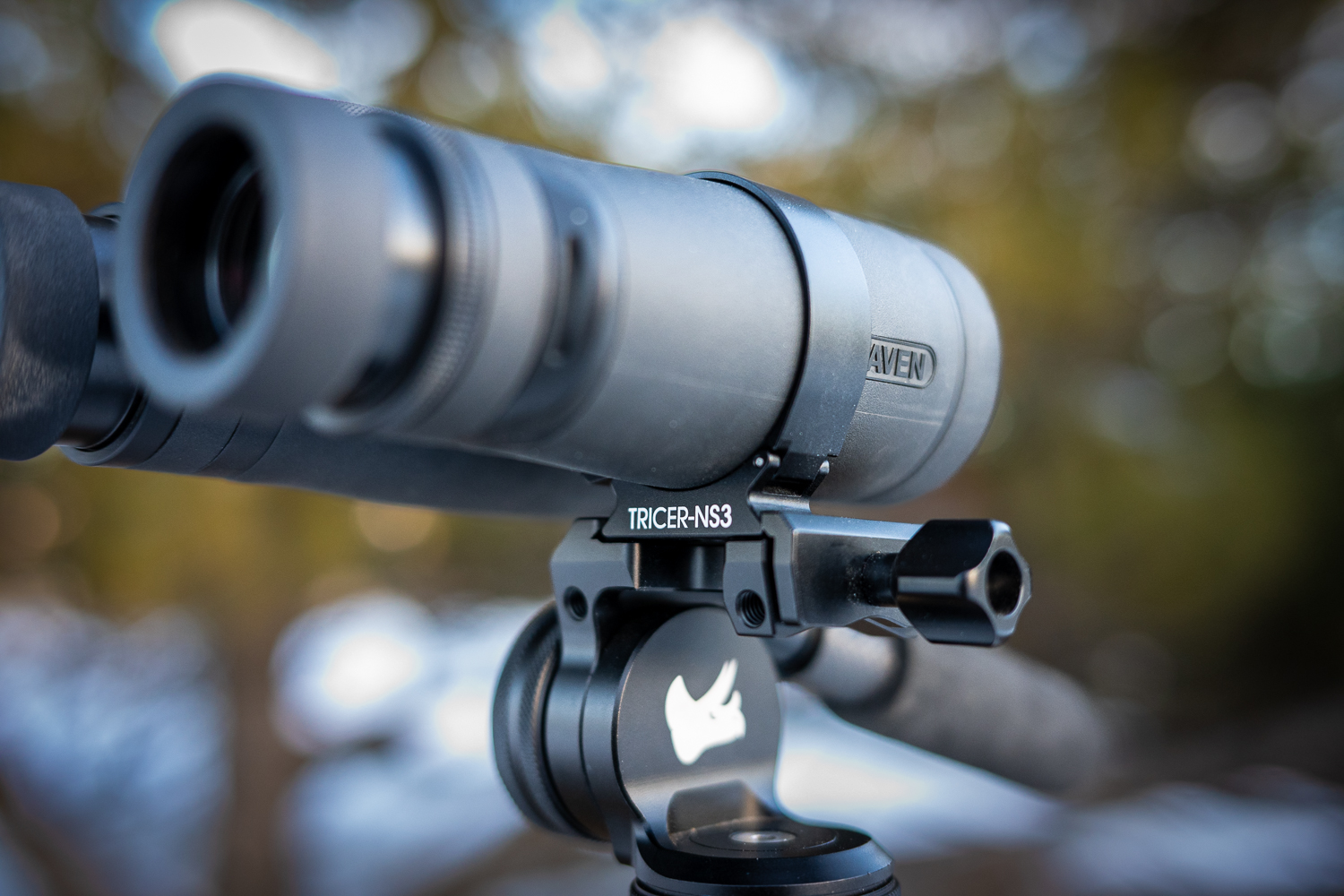
I was also able to test out the Tricer NS binocular adapter. This is an aluminum adapter that goes around one barrel of the binocular. Better made than some of the similar plastic competitors, the NS comes with the necessary spacers and screws to get a good fit on your binocular. Check the website to match the particular NS that is compatible with your binocular. The NS3 worked well on my Maven B1.2 10X42. While I generally like a center stud adapter like the Tricer-BA, some binoculars can’t be adapted this way. I like the NS solution especially for binoculars that are not compatible with a center stud like some of the range finding binoculars on the market.
Video Customer Support
Tricer’s Youtube Channel provides good overview and how-to videos for using and mounting their various products to your sport optics. Good video support for the end user really takes some frustration out of feature-rich products like Tricer’s. I was able to watch a video and easily get familiar with the JC tripod’s center post adjustments and the installation/removal of the leg weights.
Conclusion
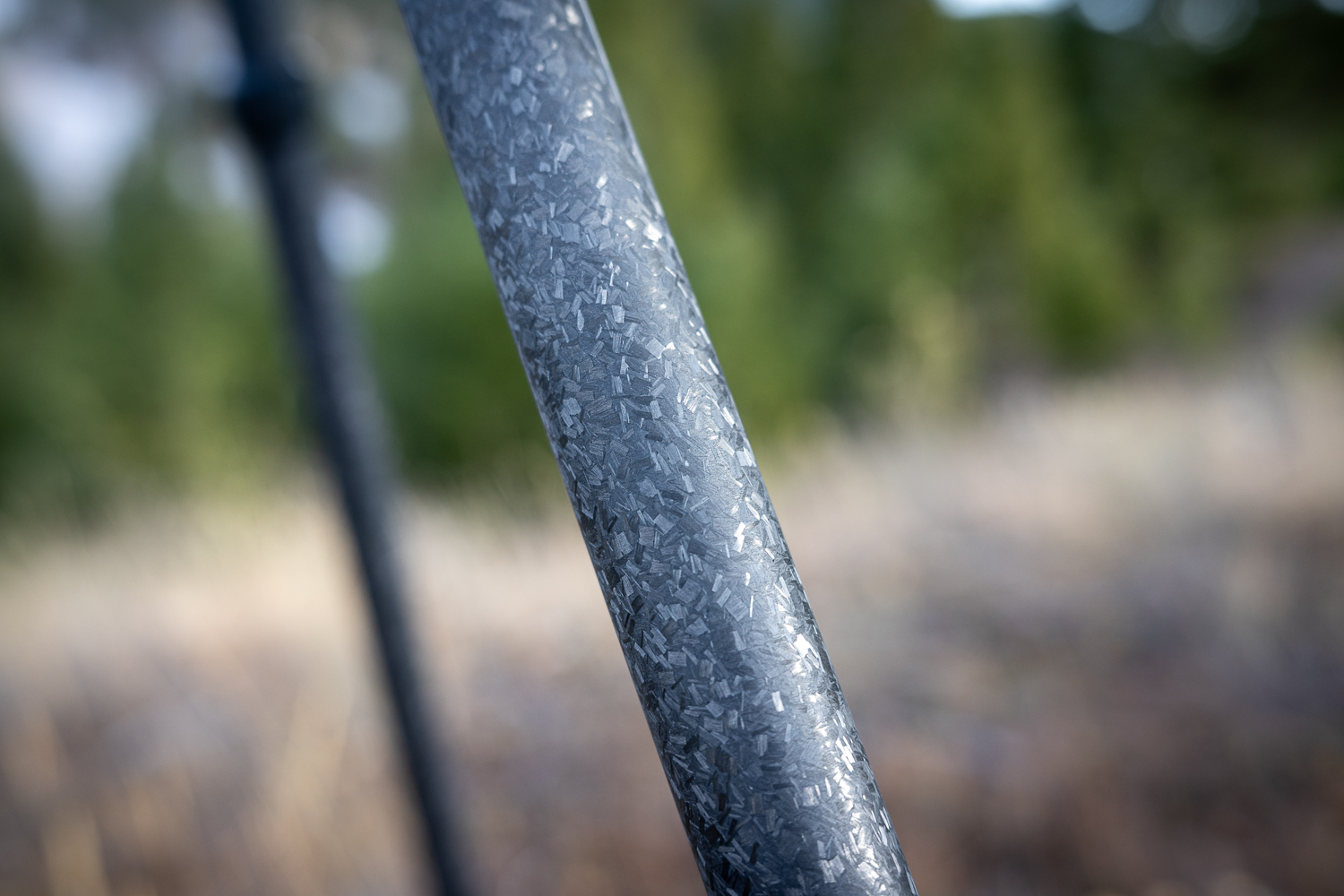
While tripod rifle shooters may want a setup that gets a little shorter for prone shooting, just about every glassing scenario is taken care of with the versatile Tricer-JC and Tricer-BP. Tricer provides hunters with two tripods in one with the Tricer-JC. Add in innovative micro adjustments for the center column and field usability is like nothing else on the market. Paired with the sturdy, smooth, and surprisingly lightweight BP head, and Tricer provides hunters with a big glass solution that is just as capable in the deep backcountry in its lighter configuration. Hunters who also do serious photography will find even more value in the setup.
Comment or ask Matt questions here.
*Tricer is a Rokslide advertiser




